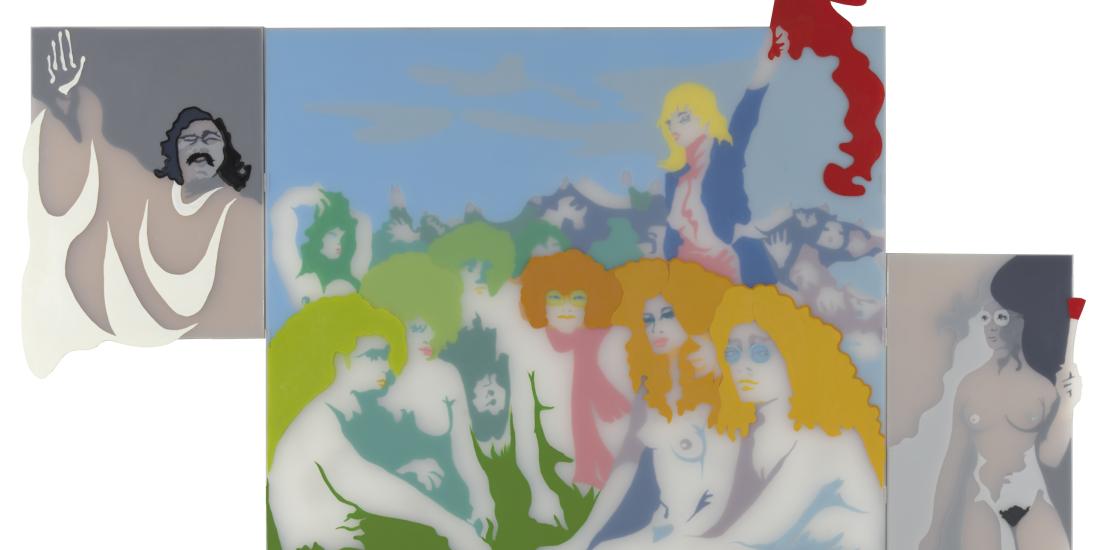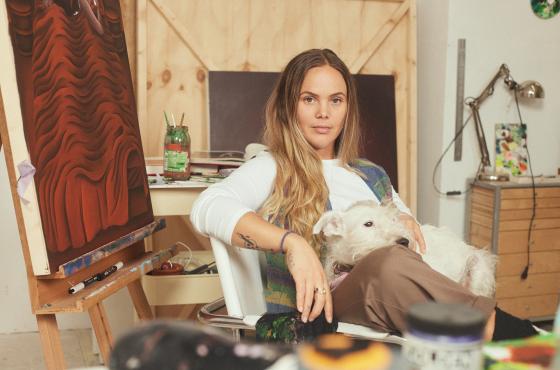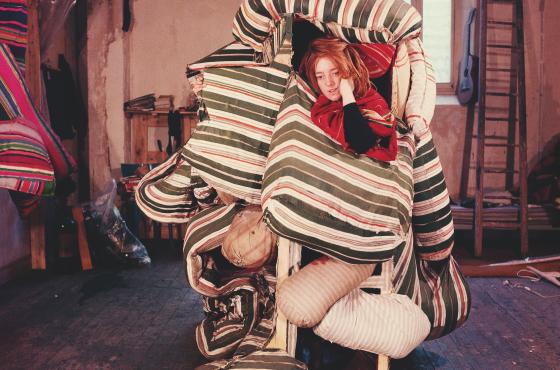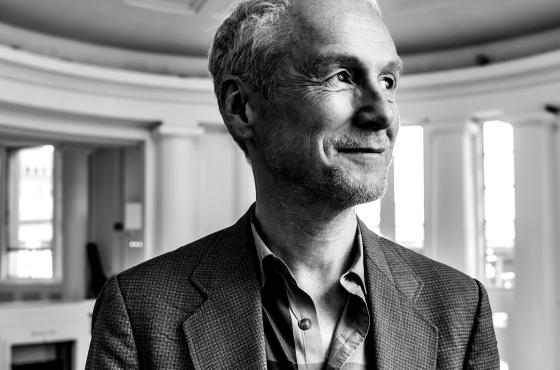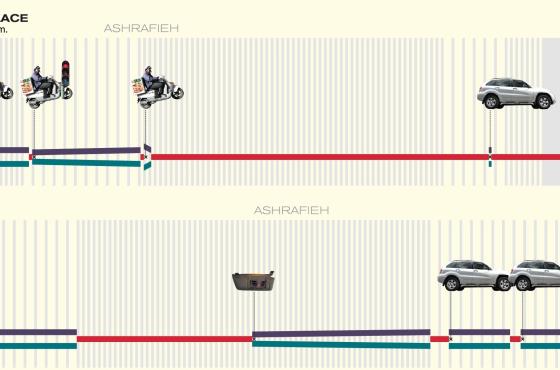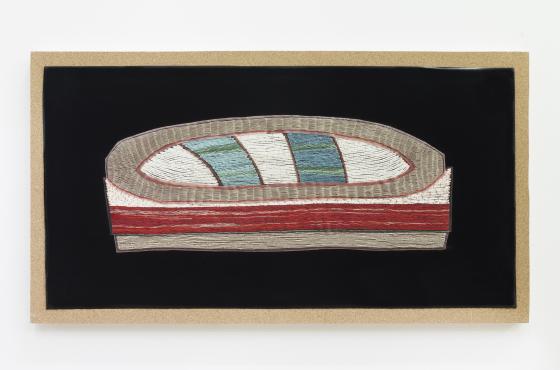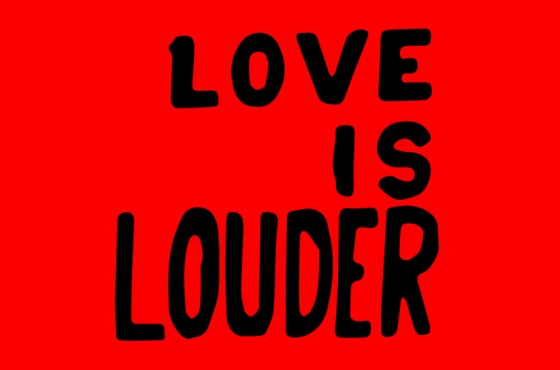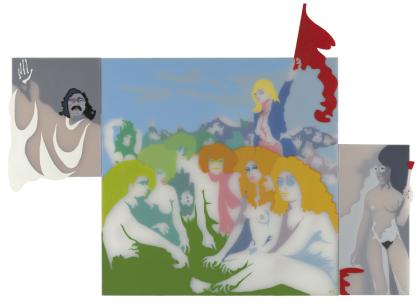Discover Le joli mois de mai in the exhibition Love is Louder.
Flamboyant hair, uninhibited naked young people lying on fresh grass, bright colours painted in enamel on plexiglas. In its form and its content, Evelyne Axell’s Le joli mois de mai (1970) transports us back to the late sixties. The title alludes to May 68 and the enthusiasm for the fresh wind that swept through San Francisco during the 1967 Summer of Love. Protesting American imperialism and the Vietnam War, hippies advocated free love and love per se. At the time of writing, these sentiments inevitably echo the heated protests igniting university campuses in response to the war in Gaza. “Make love, not war” holds true today.
The 1967 Summer of Love, which opens the epoch explored in the Love is Louder exhibition, heralds the dawn of a new era in the relationship between people. The works on display broach themes of couplehood, community and, more broadly, society.
Although her career as a painter only spanned seven years – Axell tragically died in a car crash in 1972 – the Namur-born artist left behind a prolific, politically committed and innovative oeuvre rooted in the spirit of the burgeoning Pop Art movement of her day. While her male counterparts often eclipsed her, she pioneered the exploration of female sexuality, daringly depicting female desire and pleasure.
The central panel of the triptych Le joli mois de mai sings a hymn to sexual freedom and love in dazzling colours dominated by the revolutionary red of the flag, which also symbolises love. The artist has deliberately placed the undulating, free-flowing flag outside the frame, thereby breaking the constraints of traditional triptychs – in the same way as the young protesters of the sixties stormed the streets, destroying social conventions and fighting the establishment.
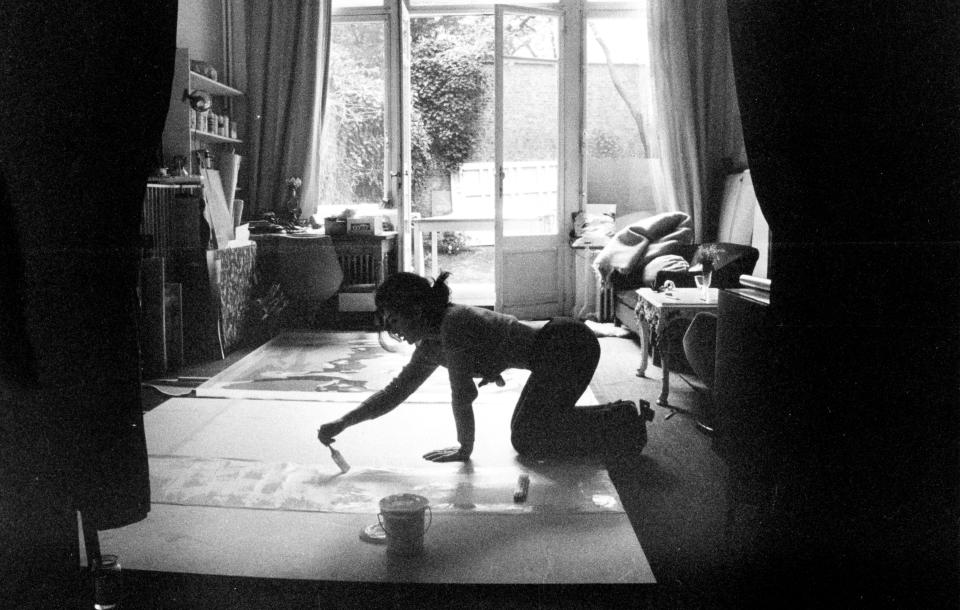
‘More than a political engagement, the revolution is also personal and intimate.’
Axell was no stranger to this rebellious spirit, nor was she insensitive to it. Indeed, the student protests also ignited Brussels, particularly in cultural circles. In May 68, Marcel Broodthaers occupied the Palais des Beaux-Arts in Brussels, where he held free assemblies, which Axell attended. While in Paris, she met Pierre Restany, the influential art critic who supported ground-breaking art, including the work of Axell, Niki de Saint Phalle and Marta Minujín – all three featured in the exhibition.
On the left-hand panel, Axell has depicted Restany as a ‘guru’ preaching the liberation of the arts. His raised hand parallels the central bare-breasted figure flying the banner of (sexual) liberation, following in the footsteps of Eugène Delacroix’s Liberty Leading the People (1830).
In the right-hand panel, Axell is depicted – as she often is – naked, wearing John Lennon glasses. Donning the attributes of a painter, she proudly proclaims her freedom to use her body and paintbrush as she sees fit.
Evelyne Axell’s masterpiece encapsulates the anti-establishment spirit of the time, personifies the sexual liberation of the era, and suggests that the revolution is not only political but also personal and intimate.
Discover Le joli mois de mai in the exhibition Love is Louder.
